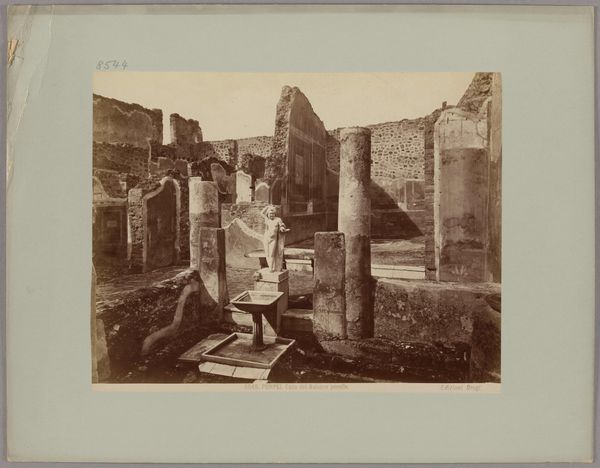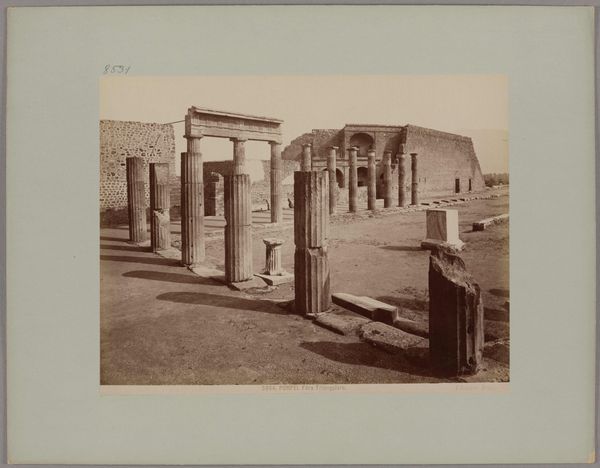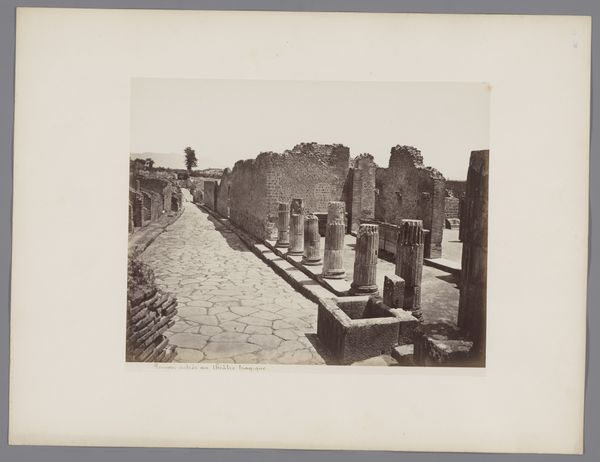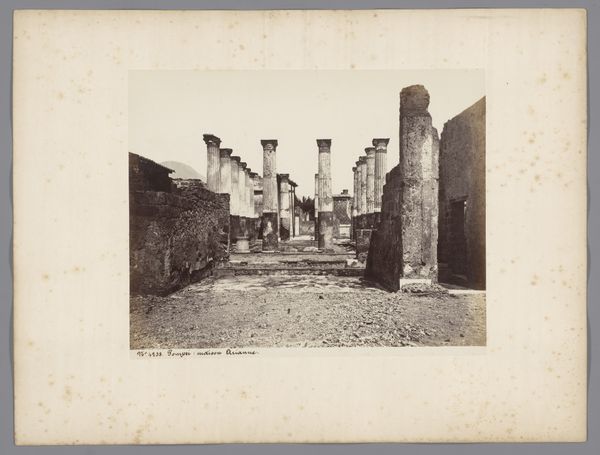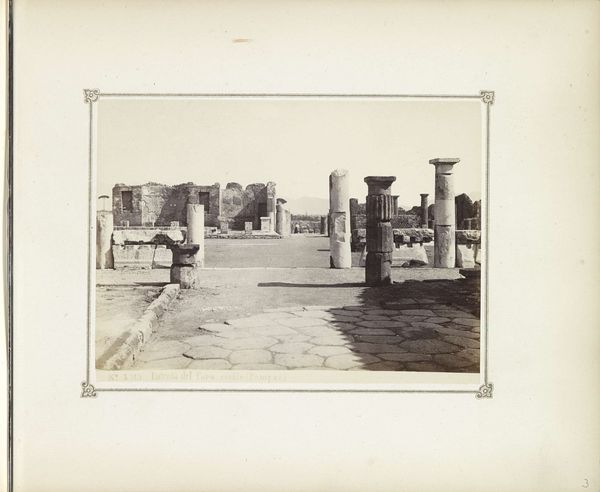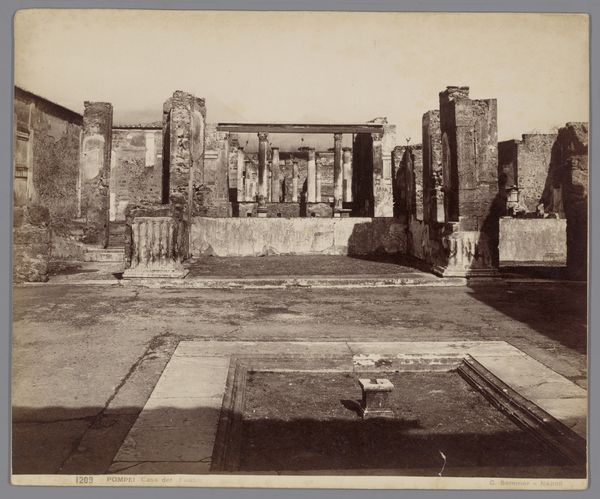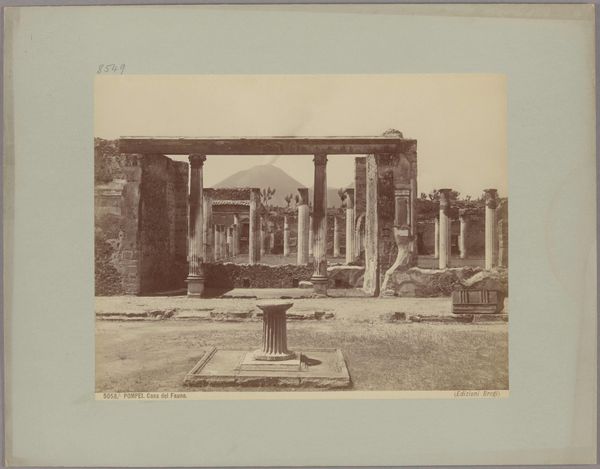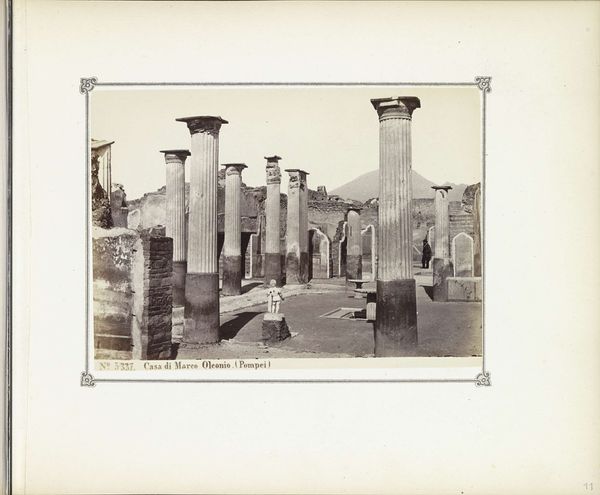
albumen-print, print, paper, photography, site-specific, albumen-print, architecture
#
albumen-print
# print
#
landscape
#
paper
#
photography
#
ancient-mediterranean
#
column
#
site-specific
#
albumen-print
#
architecture
Copyright: Public Domain
Editor: This photograph, "Pompeii, House of Pansa," was taken by Giacomo Brogi sometime between 1870 and 1880, using the albumen print process. It’s amazing to see the ruins of this house so clearly, and almost eerie knowing the story behind them. What jumps out at you? Curator: What I see is not just the ruins, but layers of time and memory preserved in this image. Consider the columns: they stand as fragmented signifiers, ghosts of a lost architectural language. Even the choice of albumen print process imbues the image with certain…gravitas. Editor: Gravitas, that's a great way to describe it. What do you mean about layers of memory? Curator: The image invites us to contemplate the cyclical nature of civilization – the rise and fall, creation and destruction. How does the ruined architecture, particularly, the columns speak to cultural memory, or rather, a shared, almost inherited, visual understanding of antiquity? Do the classical structures trigger in the contemporary mind echoes of Roman power, artistic achievement, or even moral decadence? Editor: I hadn’t thought about it that way. The columns do represent something more, I suppose - maybe stability or power? Is that Mount Vesuvius in the background? Curator: Indeed. Vesuvius is not merely a geographical detail. In this image, the volcano is transformed into an almost divine, though indifferent, force overseeing the ruins. Consider the psychological impact: how does its presence alter the way we interpret human achievement and its impermanence? It seems to suggest themes of fate. Editor: So the photograph isn't just a picture of a ruin, but a meditation on history and the weight of time. Thanks for pointing that out! Curator: Precisely. And photography becomes a form of symbolic preservation; offering not just a visual record, but a pathway into a deeper cultural understanding of destruction and endurance.
Comments
No comments
Be the first to comment and join the conversation on the ultimate creative platform.

